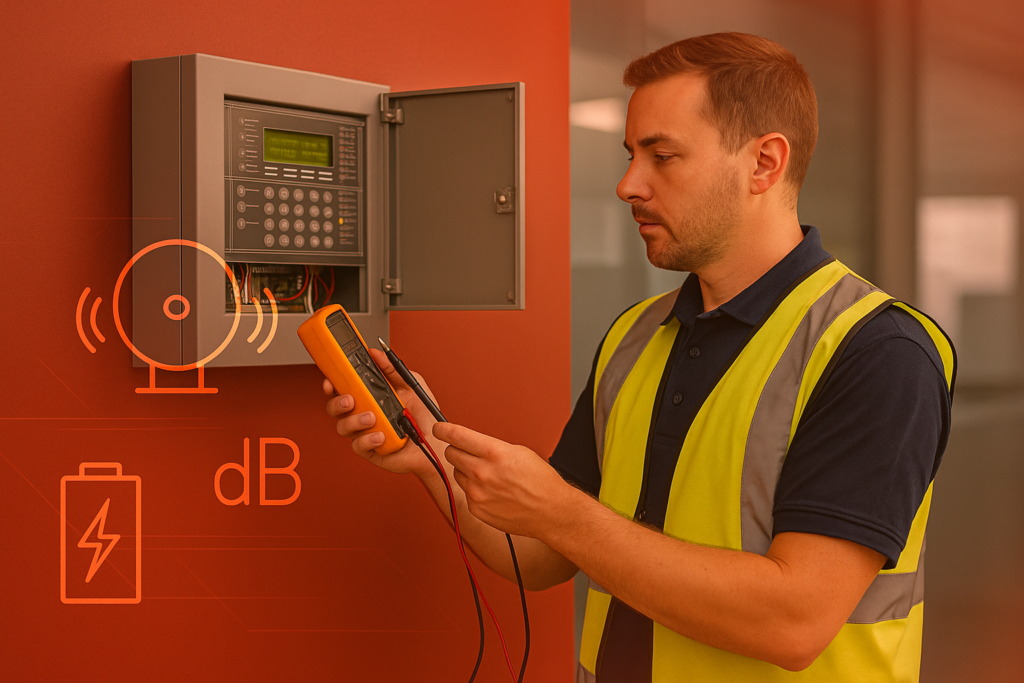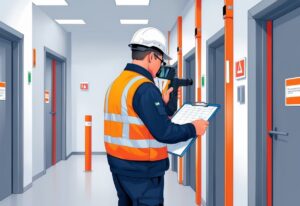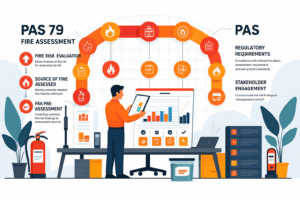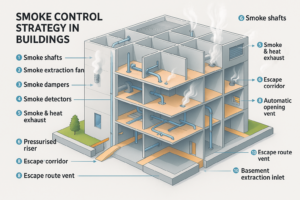Certified Fire Risk Assessment Services
Fire Safety Compliance & Risk Assessment
- Local experts: Engineers based across Central, North & South London—rapid call‑outs.
- Qualified & insured: Level 4 Fire Risk Assessors, BAFE SP205 company certification.
- Fast turnaround: Digital PDF report within 48 hours, including action‑priority matrix.
- Transparent pricing: Fixed‑fee quotes; no hidden mileage or admin surcharges.
- One visit, three certificates: We test your alarms & emergency lighting while onsite—saving you time and money.
Protect people, property and reputation.
Our London team delivers full fire risk assessments, fire alarm inspections and emergency‑lighting checks backed by BAFE SP205 and ISO 9001 accreditation.
Our 4‑Step Compliance Process
Enquire
Send floorplans or book a free video walk‑through.
Site Visit
Assessor arrives with calibrated kit—no disruption to business hours.
Digital Report
Receive your fire‑risk report and inspection certificates within 48 hours.
Ongoing Support
Free 15‑minute review call + reminders for annual renewals.
What Does Our Full Fire Risk Assessment Include?
Site Survey
The starting point of every compliant fire-risk assessment is a site survey that leaves no corner unchecked. Our London-based assessors physically walk the building—from basement plant rooms to rooftop risers—logging ignition sources such as overloaded sockets, hot works and cooking stations. We photograph each issue and geotag it so you can trace risk hotspots on a floorplan in seconds.
Next, we measure fuel loads: stacked packaging, soft furnishings, document stores. By rating each area’s combustible mass we can predict fire growth and recommend quick-win housekeeping fixes—often as simple as adding a metal bin or reducing a cardboard backlog. These small tweaks cut your fire load without capital spend.
Escape routes get the same forensic treatment. We time evacuation walks, check door widths and confirm that exit signs are visible in both normal and emergency lighting. If a final exit opens onto a busy London pavement we note crowd flow and recommend re-routing where needed. That real-world context keeps your plan workable during a 5 p.m. rush-hour alarm.
Finally, we enter all findings into our cloud checklist as we go, meaning you receive a preliminary verbal briefing before we leave site. No waiting days to hear about critical defects—it’s instant, actionable insight.

Fire Alarm Inspection

While many providers rely on a visual look-over, our BS 5839 inspection digs deeper. Every detector head is pole-tested to prove correct activation temperature or smoke sensitivity. We record serial numbers and expiry dates so you know precisely when replacements are due, saving emergency call-out costs later.
Control-panel integrity is next on the list. We open the enclosure, tighten terminals, and run a mains-fail simulation to verify that standby batteries hold the required 24-hour capacity. Any low-voltage readings trigger an on-the-spot replacement quote, preventing the dreaded midnight “panel fault” beeps.
Sounder circuits are checked with calibrated meters to confirm that evacuation points hit the BS 5839 minimum of 65 dB (75 dB in sleeping areas). Too loud? We can fit attenuators; too quiet and we propose extra sounders—both fixes are costed there and then.
All results feed straight into your log book, stamped by a competent engineer. That paperwork is what London Fire Brigade inspectors look for first, so you’re protected when the clipboard brigade arrives.
Emergency Lighting Testing
A compliant emergency-lighting system is more than just fluorescents that glow when the power fails. We start with a three-hour discharge test, the gold-standard in BS 5266. By fully draining batteries we expose hidden weaknesses that a quick flick-test misses. Failed fittings are tagged and photographed for easy contractor follow-up.
Next, our engineers conduct lux-level sampling along escape corridors, stair cores and high-risk task areas. Using calibrated meters, we confirm that illumination stays above the BS 5266 threshold for the full discharge period. Where readings sag, we recommend higher-output LEDs or extra fittings, complete with budget pricing.
We also verify circuit labelling and key-switch locations, a common shortfall in older London blocks. Clear labels mean your on-site team can perform the monthly one-minute functional test without hunting for hidden switches.
Finally, we update (or create) your emergency-lighting log book on the spot. That eliminates the admin lag and gives you a ready-to-show record if your insurer or the Building Safety Regulator calls.


Risk Evaluation & Action Plan
Data is useless without direction, so every survey ends with a Red-Amber-Green action matrix. We grade each finding by life-safety impact and likelihood, then assign it a clear timeframe—Immediate (7 days), Short-term (30 days) or Medium-term (90 days). This lets facilities managers tackle the highest risks first instead of drowning in a 60-item snag list.
To help you budget, we attach cost-class bands: < £250, £250–£999, £1,000+. That makes it simple to build a capex request or allocate petty-cash fixes. For example, swapping a blown emergency-light battery goes in the lowest band, while adding fire-rated doors sits in the top tier.
We also flag “no-cost wins” such as rearranging storage or tightening a loose fire-door hinge—actions your caretaker can handle tomorrow. That mix of strategic and tactical tasks keeps momentum high and spend focused.
Need stakeholder buy-in? We supply a one-page executive summary with charts that translate technical jargon into business risks—ideal for board packs or leaseholder updates.
Digital Compliance Pack
Paper folders get lost; our digital compliance pack keeps every certificate a click away. Within 48 hours, you receive a password-protected PDF report that collates the full fire-risk assessment, BS 5839 alarm certificate and BS 5266 lighting log. Each defect links to its photo evidence for crystal-clear storytelling.
We overlay findings onto your CAD floorplans, colour-coding zones and evacuation routes. Need to brief a new security guard? One glance shows them exactly where the disabled refuge points or call-points sit—no lengthy induction required.
Editable log-book templates come pre-filled with your site details and testing schedules. Just tick and sign going forward; no more formatting headaches or missing pages when auditors visit.
Because everything lives in the cloud, you can grant temporary access to contractors or the London Fire Brigade during enforcement checks. It’s compliance made transparent—and hassle-free.

Industries We Serve Across London
Areas We Serve
Looking for a ‘Fire risk assessment’?
We operate across all 33 boroughs, including:
City of London, Westminster, Camden, Islington, Southwark, Lambeth, Kensington & Chelsea, Hackney, Tower Hamlets, Greenwich and beyond – including Kent, Essex and Surrey.
Fire Risk Assessment London – FAQs
The Regulatory Reform (Fire Safety) Order recommends annual reviews and a new assessment whenever significant changes occur.
A typical 10,000 sq ft office takes 2–3 hours for the survey plus alarm & lighting checks.
All lead assessors are Level 4 Diploma holders and appear on the Institute of Fire Safety Managers (IFSM) Tier 2 register.
Yes—our approved contractors can complete fire‑stopping, alarm upgrades and emergency‑lighting installations.



